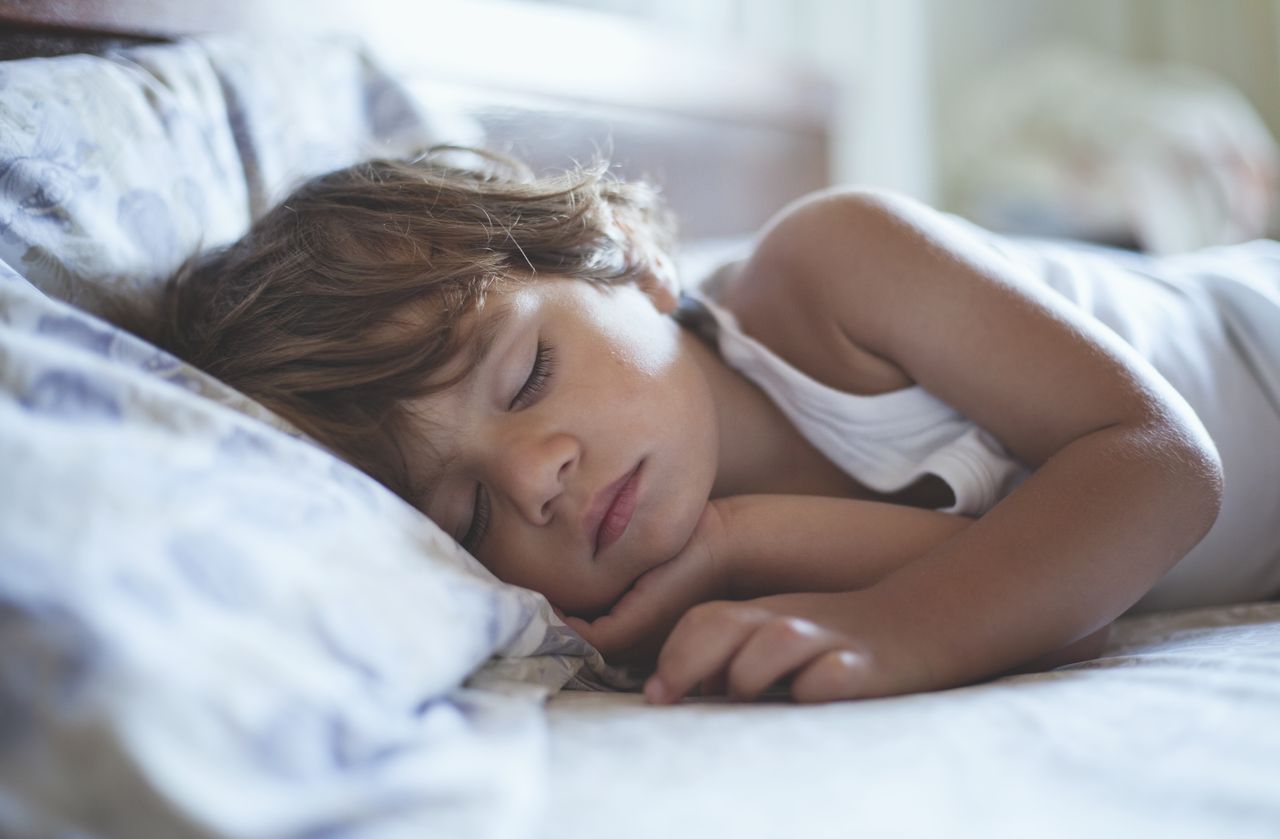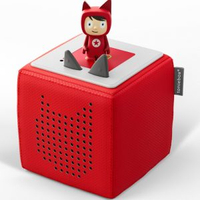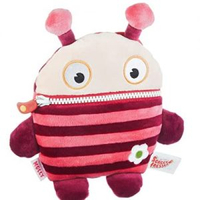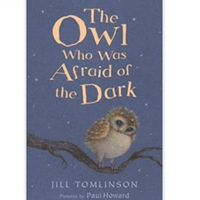World Sleep Day 2022: Six tips to help your child fall sleep


There's no denying that the pandemic has impacted our sleep - and children are affected too. Try these expert tips, released to mark World Sleep Day, to help little ones fall asleep.
Sleep is a key part of children’s mental and physical development, but parents know that it’s not always easy to settle small ones down for the night. New research, released to mark World Sleep Day today, reveals the impact of the pandemic on UK children’s sleep - along with their biggest fears at bedtime.
The survey conducted by children’s audio system tonies found that:
- 39% of parents feel their child is experiencing trouble sleeping
- 31% say their children are having worse nightmares because of the pandemic
The research also reveals the most common fears which stop little ones from sleeping, and the most recurring nightmares that children experience. This includes getting chased by a frightening person or animal (31%) and being lost or left behind in public (31%). Almost a third (31%) of children also said they are afraid of the dark, which prevents them from falling asleep.
Top 5 things preventing children from falling asleep:
1. Believing a monster/scary creature is in their bedroom (39%) 2. Fear of missing out (what grown-ups are doing while they are asleep) (38%) 3. Separation anxiety (38%) 4. Fear of having a bad dream if they go to sleep (33%) 5. Fear of the dark (33%)
Over two-fifths (42%) of parents say the pandemic has heightened their child’s stress and anxiety. Almost a third (31%) reported an increase in (or worsening) nightmares over the last two years and 38% of parents said that their child struggles to go to sleep due to separation anxiety.
https://youtu.be/XeMNc7b93jY
When asked about the key reasons that children were struggling to fall asleep, believing a monster or scary creature in their bedroom was the leading cause (39%), followed closely by fears of missing out (38%) and worries about having bad dreams when they sleep (33%).
Top 5 effects the pandemic has had on children:
1. Increased stress/anxiety (42%) 2. Increased loneliness (41%) 3. Trouble sleeping (39%) 4. New fears they weren’t afraid of before (37%) 5. Increased or worse nightmares (31%)
'The pandemic created fears that children did not have before, and as a result, parents are finding it more and more difficult to help their little ones drift off, and sleep peacefully until the morning,' says Pinky Laing, Partnerships and PR Manager at tonies® UK and Ireland. 'Sleep is a key part of children’s mental and physical development and it's important to adopt a positive attitude to sleep early on.'
Top 5 themes present in children’s nightmares:
1. Monsters (37%) 2. Getting lost (in shopping centres or busy areas) (31%) 3. Being chased by a frightening person or animal (31%) 4. Scary animals (30%) 5. Falling (23%)
Six tips to help your child fall asleep at bedtime
With two fifths (39%) of children experiencing trouble sleeping since the beginning of the pandemic, tonies has shared these simple ways to help children ease into a relaxed state, drift off, and stay fast asleep until the morning:
1. Ease gently into bedtime
Heading upstairs doesn’t need to signal ‘the end’ of a fun day, or punishment for bad behaviour. Try moving living room evening play to your child’s bedroom to create an easier transition into nighttime, and bedtime. This is a great way to gradually ease them into a restful, sleep-ready mindset before it’s time for lights out.
2. Switch off screens
We all know that tablets, phones, and televisions aren’t helpful at bedtime, particularly for children. Not only do screens prevent them from nodding off, but they negatively impact the quality of sleep they have. The blue light interferes with the production of melatonin, the natural sleep hormone which regulates our body clocks and sends a cue to go to sleep. The recommended guidance is to switch off screens an hour before bedtime, or at the very least, switch to ‘night time mode’ which removes that blue light.
Even better, introduce activities that can help balance screen time usage, such as audiobooks.
3. Consistency is key
A good routine is the cornerstone of a great night's sleep. Creating a routine, and sticking to it, will lay the foundation of a positive sleep practice. Start with a warm bath - proven to increase the blood flow which assists with the natural circadian process, helping us fall asleep quicker and improving our quality of sleep. The next stop on the bedtime routine is to get cosy; put on pyjamas, get comfy and settle in for a story. Sharing a story can help foster closeness with your little one and encourage a love of reading.
4. Swap out sugar
A fizzy drink can be a real treat, however, try to avoid it around dinner time or in the evening. Some of these drinks have hidden caffeine content. Even in the smallest traces, this can prevent your child from falling asleep and can even increase anxiety. A drink of water, sugar-free squash, or a glass of warm milk are recommended alternatives. Conversely, some food has high amino acid content, which encourages the production of melatonin. Cheese, fruit, and nuts are great foods to introduce as a bedtime snack.
5. Create the ideal sleep environment
Making sleep a positive experience is key to creating a fuss-free bedtime, and curating a calming sleep environment helps. Set the room to a temperature that suits your child by putting the fan on or increasing the heating. Also, consider your child’s bedding preference - do they need a thicker duvet or a lighter one? Make it a sensory experience; lavender is a calming scent, so consider placing a diffuser in your child’s room.
6. Make your child feel safe
The belief that there's a scary monster in the bedroom is the number one fear preventing children from falling asleep. What’s more, a third are too scared of having a bad dream to sleep, and another third are scared of the dark. Your child may need help to conquer their fears, however irrational. There are lots of ways to achieve this, and to help reassure children and encourage a good night’s sleep, tonies® has released ‘Only Monsters can Hear This’: a special downloadable audio which ‘shoos away’ mischievous bedtime beasts. After a soothing introduction to ease children into a sleepy state, it plays a sound that ‘only monsters can hear’ to make them hurry away.
Finally, if you're looking for extra resources to help your child sleep at night or overcome bedtime worries, you might also be interested in our sleep aids buying guide or these helpful bedtime products - all of which I've used with my own children:
GoodtoKnow Newsletter
Parenting advice, hot topics, best buys and family finance tips delivered straight to your inbox.

Heidi is a seasoned parenting journalist with over 15 years of experience. She has contributed to numerous UK national newspapers, including The Guardian, The Times, and The Telegraph. Her work has also appeared in a variety of print and digital magazines, such as Psychologies and Mother & Baby, where she was Shopping Editor for six years. In this role, she specialised in consumer features, including buying guides and baby gear reviews. Heidi is also a mum of three.
-
 Ploov heated cushion review
Ploov heated cushion reviewOur Money Editor reviews the Ploov - a heated cushion that claims to help lower energy bills
By Sarah Handley Published
-
 Le Creuset Cyber Monday deals with half price casserole dishes and more
Le Creuset Cyber Monday deals with half price casserole dishes and moreLooking for the best Le Creuset Cyber Monday deals? We've spotted HUGE savings like £100 of their classic casserole dishes to savings on cast iron skillets and everyday kitchen items.
By Emily Stedman Published
-
 Here are the best Black Friday flight deals this year
Here are the best Black Friday flight deals this yearBlack Friday flight deals have landed, here's a roundup of the best trips on offer, so you can save some money on your next trip away
By Ellie Hutchings Published
-
 Cordless vacuum deal: Save £150 on this top-rated Shark model for Cyber Monday
Cordless vacuum deal: Save £150 on this top-rated Shark model for Cyber MondayAmazon have slashed the price on this Shark cordless vacuum exclusively for Black Friday and Cyber Monday. Save a whopping £150 and pick it up for just £229.99.
By Emily Stedman Last updated
-
 Get these classic ghd straighteners for under £90 in Amazon's Black Friday sale
Get these classic ghd straighteners for under £90 in Amazon's Black Friday saleThis Black Friday score a cracking deal on ghd straighteners and other hairstyling tools by the bestselling brand thanks to live offers from Amazon, ghd online and ASOS.
By Emily Stedman Published
-
 Dyson Airwrap Black Friday - this year's best deals are dupes
Dyson Airwrap Black Friday - this year's best deals are dupesIf the Dyson Airwrap is out of your budget (me too), you'll love these deals on popular dupes
By Heidi Scrimgeour Last updated
-
 Black Friday electric blanket deal: Save 42% with the Amazon sale
Black Friday electric blanket deal: Save 42% with the Amazon saleBlack Friday electric blanket deals are a hot topic now that temperatures have plunged, and we've found one that will save you £25
By Ellie Hutchings Published
-
 SAVE OVER 50% with this Dyson supersonic hair dryer Black Friday deal
SAVE OVER 50% with this Dyson supersonic hair dryer Black Friday dealWe've spotted a HUGE saving on the Dyson supersonic hair dryer for Black Friday 2022 - and it's an item that's sure to be on many Christmas lists this year
By Ellie Hutchings Last updated




